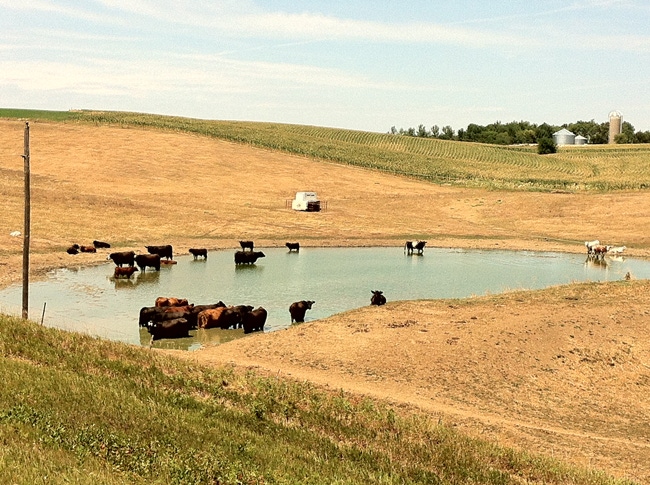August 16, 2012

After early spring rains, emerging drought conditions wilted Tenth District farm income expectations during the second quarter, according to the Federal Reserve Bank of Kansas City’s quarterly Survey of Agricultural Credit Conditions.
At the beginning of the quarter, participation in the southern portions of the District led to a rebound in winter wheat production and farm incomes. Yet, by the end of the quarter, intensifying drought conditions were cutting bankers’ expectations for farm income during the third quarter.
Bankers reported that livestock producers were bearing the biggest burden from the drought. Higher feed costs and lower cattle prices from forced herd liquidations were cutting livestock profits. Several survey respondents noted that high crop prices would support crop incomes for producers able to harvest a crop and those that have crop insurance.
Despite the weaker outlook for farm income, loan repayment rates were expected to hold near year-ago levels. Although operating loan demand was sluggish in the second quarter, bankers expected loan demand to strengthen in the third quarter as drought boosted production costs. Bankers indicated ample funds were available for farm loans, and interest rates edged down further.
District farmland values rose less rapidly during the second quarter and were well above year-ago levels. District irrigated and nonirrigated cropland prices remained more than 25% above year-ago levels. Looking forward, more than three-quarters of the 241 survey respondents expected farmland values to hold at current levels during the rest of the growing season.
The complete survey is available at www.KansasCityFed.org/agcrsurv/agcrmain.htm
Note: 241 banks responded to the second-quarter Survey of Agricultural Credit Conditions in the Tenth
Federal Reserve District—an area that includes Colorado, Kansas, Nebraska, Oklahoma, Wyoming, the northern half of New Mexico and the western third of Missouri
You May Also Like




